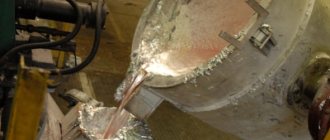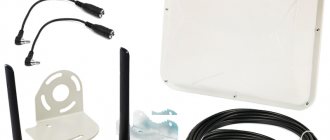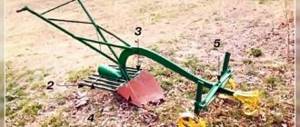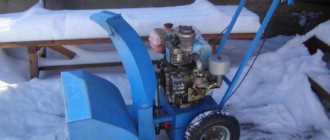General rules for sharpening chisels
To sharpen the blade of carpentry tools, you will need to rigidly fix the product at the desired angle to the abrasive surface. Moreover, it is necessary to strictly maintain the angle both in the longitudinal and transverse directions. Two types of sharpening mandrels are used for fixation:
- equipment used to process the working plane of a chisel on the abrasive wheel of an electric sharpening device;
- manual mandrel for sharpening tools on whetstones and sheet abrasives.
Chamfer processing of carpentry parts is carried out using a grinding stone with a grain of 300-400 microns, followed by the procedure of finishing the cutting edge with an abrasive of 50-80 microns. To sharpen chamfers, both electric sharpeners and hand tools are used. At this stage, it is important to achieve equal angles of inclination on both sides of the canvas.
Finishing is carried out exclusively by hand, during which the cutting edge is extremely sharp and micro-irregularities and scratches are eliminated. The purpose of finishing is to achieve geometric accuracy of the working surface of a wood carving chisel.
Tools and materials for sharpening
To adjust the sharpness of a wood carving chisel, various types of tools and materials are used:
- sharpening machines of vertical and horizontal types;
- sharpening stones;
- bars with sandpaper;
- sheet abrasives;
- cloth polishing resources and felt bases.
Sharpening of chisels can be done using a machine.
To fix the tool, use:
- metal models of factory-made mandrels with angular adjustment;
- homemade wooden versions of devices in which the angle is formed using wedges.
The fixing device provides two functional components in the form of a carriage for moving along the abrasive surface and an inclined platform with a clamp. The latter is pre-set at a given angle.
Sharpening technique
In order to properly process the working surface of the chisel, it is recommended to use special products that have both grinding and polishing properties. Most often, preference is given to sharpening water stones or fine-grained sheet abrasives on a water-resistant basis.
Preparatory stage
Sharpening stones are pre-soaked in water. During the sharpening process, the liquid helps create a viscous grinding suspension, as it mixes with abrasive dust.
Angle editing and chamfering
The wood chisel is fixed at a given angle; according to the standards, the inclination is about 25°. This parameter may vary depending on the purpose of the joinery:
- The chamfer of the tool for slotting work is sharpened at an angle of 27-30°;
- for accurate trimming of wood with the removal of thin chips, a correction of the working surface by 20-22° is required;
- A universal chisel for most woodworking is sharpened at an angle of 25°.
It is worth considering that the sharpening angle of the chisel also depends on the parameters of the blade: thick blades provide a relatively steep bevel.
If you need to form a chamfer with significant adjustments to the sharpening angle, you should start working on a sharpening machine. To easily correct the sharpness of the cutting edge, perform the following steps:
- process the chamfer on the abrasive stone until visible damage is completely eliminated. In this case, the specified slope must be maintained both in the longitudinal and transverse directions;
- check the cutting edge for geometric evenness. Here it is necessary to achieve strict perpendicularity of the line in relation to the canvas. Otherwise, you will have to straighten the edge on the sharpening stone, after which the working surface is ground again to an ideal sharpness.
The angle for sharpening chisels should be about 25°.
If it is necessary to adjust the sharpness of a chisel with a bevel on the edge, grind it with a stop, lifting the cutting blade up within 5°.
Features of cutter processing
The work is carried out taking into account the following recommendations:
- First, the flat side of the canvas is processed. Movements are performed along the same trajectory along the entire length of the stone;
- then change the position of the chisel and work with the main working surface of the wood carving tool. Movements should be uniform, without jerking, but quite fast. In this case, it is necessary to maintain the desired angle of inclination;
- after the coarse-grained abrasive begins to leave scratches on the surface of the cutting blade, switch to a medium-grained stone. Next, if necessary, use an abrasive material with fine grain;
- when sharpening the chamfer, 1.5-2 mm is allocated, the perimeter is made at an acute angle of 5-7°. The chamfer is formed in just a few movements along the entire length of the stone.
It is noteworthy that the process of sharpening a wood chisel takes no more than 10 minutes if a simple correction of the sharpness of the carpentry is performed. If there are significant irregularities, chips or other defects on the surface of the tool, sharpening will take up to 1 hour or more.
Final polishing
The process of sharpening a chisel for wood carving is completed by straightening using various devices. Most often, they use a leather belt rubbed with GOI paste, or a kitchen cleaner on a flat wooden surface. The blade can also be polished on a felt wheel using polishing paste.
DIY knife sharpeners
There are many types of knife sharpenings, from which you can choose the one that best suits your needs.
All devices consist of two parts:
- a block of abrasive material;
- stop for attaching the knife.
You can use ready-made special stones as a bar or make it yourself.
Sharpening stones - types and manufacture
There are several types of stones on sale:
Water tools. When working with them, water is used, which saves the surface of the stone.
Oil stone resembles water stone in structure and shape, but its surface is the most oily.
Natural instruments are made from natural stones that undergo industrial processing.
Artificial stones are made from non-natural components.
Rubber tools can also be found on sale, but they are not very convenient to work with.
To make your own abrasive bar, you can use small rectangular glass plates with a thickness of 4–5 millimeters. Using double-sided tape, you need to stick sandpaper of different grain sizes onto the surface of the plates. The cost of such bars will be quite small, and the sandpaper can be replaced at any time.
However, when using a glass block, you must tighten the nuts very carefully , otherwise the glass may crack. In addition, no water is used when using it, so the abrasive wears out quickly. For the same reason, when sharpening knives, you should avoid rapid movements, which can lead to overheating of the material, and, therefore, to the loss of the properties of the blade.
Device for sharpening from wooden blocks
It is enough to simply make a sharpening tool from two wooden and two abrasive bars, which should be the same size.
- Wooden blocks must be sanded using sandpaper, removing all burrs from them.
- Make preliminary markings on the bars depending on the required angle.
- Place a sharpening stone on the marked line and mark its width on both sides of the wooden block.
- Make cuts according to the markings on the wooden blanks, the depth of which should be about 1.5 centimeters.
- The abrasive bars must be inserted into the resulting recesses so that all the grooves coincide.
- Secure the sharpening stones with bolts.
to attach a piece of rubber to its lower surface .
Do-it-yourself sharpener from mounting corners
The basis for this device is a Lansky sharpener, drawings of which can be easily found on the Internet.
Required materials and tools:
- metal plates measuring 4x11 centimeters;
- standard aluminum corners;
- metal rods about 15 centimeters long;
- set of nuts and bolts;
- a sharpening machine with a vice or a file;
- needle file
Instead of a sharpening machine, you can use a file, since this tool is only needed for grinding off sharp corners and cleaning the metal cutting areas.
Stages of making a sharpener:
- According to the drawing, markings are made for future holes in the plates.
- The holes are drilled and threaded.
- Using a file, all sharp corners and edges are rounded. This will allow you to comfortably use the made knife.
- Holes are made in the corner in accordance with the drawing.
- The hole for the spoke support is expanded using a needle file.
- The holes for the studs are threaded.
- The rods are inserted into the outer holes and secured with nuts of the appropriate diameter (M6).
- An M8 bolt is screwed into the wider hole, the length of which should be about 14 centimeters. A wing nut must first be screwed onto it, on top of which two ordinary nuts are screwed. The bolt in the structure will be used as a support post.
- Bolts are attached to the remaining holes, with which the knife will be clamped.
- Nuts are screwed onto the ends of the rods, a corner is threaded, which is fixed with the help of nuts. By lowering or raising the rods, you can adjust the sharpening angle.
- A thin metal rod in the shape of the letter L, a rod with an M6 thread, two holders and a wing nut are used to assemble a device that will hold the sharpening stone. The outermost holder must have a through hole for the knitting needle.
Chisel sharpening machine
Various models of machines and devices for sharpening chisels are presented in specialized stores in Moscow and other cities. Since the device provides a simple design, they often make equipment for correcting the sharpness of carpentry tools with their own hands.
To make a homemade sharpening machine, make a blank for the base with dimensions of 13x76x255 mm. The work to be done next is as follows:
- Moving 19 mm from the back line of the workpiece, cut out a 5x45 mm tongue and groove. To do this, use a device with a cutter to form grooves.
- Using a slitting disc, a bevel is made at an angle of 25°.
- The workpiece is fixed on the base surface. Double-sided tape is most often used for these purposes.
- A vertical cut is made to set the final length of the device for sharpening chisels; the size of the product is 190 mm.
Machine for sharpening chisels
To build a trolley holder, use a workpiece with dimensions 19x45x255 mm:
- a bevel is made on the workpiece at an angle of 25°;
- vertically trimmed within a length of 190 mm;
- on the bottom surface, moving 32 mm from both edges, drill 2 holes;
- Using a groove disk, a 102x1.5 mm recess is formed to fix the chisel.
Next, a clamp is cut out, and holes for screws are drilled in a selected area in the middle of the workpiece at a distance of 32 mm from each edge. Then the handle is glued to the clamp. The final assembly of the structure is carried out after the fixing composition has completely dried.
For normal operation of the machine, the base tongue is treated with a wax composition. This also helps to optimize the sliding level of the holder.
Sharpener LM
If in the future you plan to do professional sharpening of tools in large quantities, then you can make a sharpener called: Lansky-Metabo. Drawings of a device for sharpening knives with your own hands look like this:
If the product is clamped in the clamps with the root part, the sharpening angle will be greatest. A knife with this angle can be used as a “cleaver” and for processing hard wood. You can also easily sharpen knives using a jointer. Knife clamps can be made from angle iron or wood. The disadvantage of this design is the complexity of assembly and the large number of parts.










